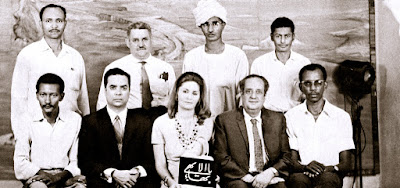Following the traditional pattern, Khadijih Khanum married
probably very young to a certain Aqa Sultan. He died sometime after the birth
of their third child. They had two daughters and one son and were probably
residing in Tihran. Sometime after his death, Khadijih Khanum married Mirza
Buzurg.
Khadijih Khanum’s family had preexisting ties to the family
of Mirza Buzurg since an older sister of Mirza Buzurg was already married into
the family. It is estimated that their wedding took place between 1810 and
1812. They had five children. The first-born of that marriage was a daughter,
Sarih Khanum: she is generally known as 'Ukht’, Arabic for sister, because
Baha’u’llah has thus referred to her. The next was a son, Mirza Mihdi, who died
in his father's lifetime. Bahá'u'lláh was their third-born. The fourth was
another son, Mirza Musa, entitled Aqay-i-Kalim in later years, and the fifth
was another daughter, Nisa Khanum, who was married to Mirza Majid-i-Ahi, a
secretary of the Russian Legation. It was the Custom of the family to spend the
winter months in Tehran, where Mirza Buzurg would attend to his government
duties, and the summer in the family home in Takur. It is not clear exactly
when Khadijih Khanum passed away and where she has been buried.














